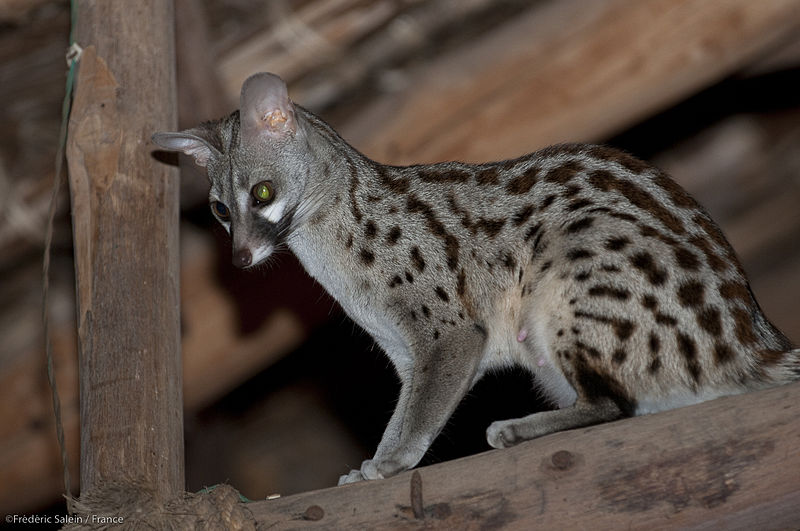Interactions
The common genet is reliant upon many organisms in order to survive. In particular, genets rely on other species for food and space resources…
Feeding Habits:
Common genets are nocturnal mammals that prey upon a variety of small animals that they can catch, including small rodents, insects, small birds, and fish. They are classified as carnivorous mammals, but it has been discovered that they are truly omnivorous animals due to fruit remnants found in their scat samples (African Wildlife Foundation, 2013). Genets are stealth hunters and will kill their prey with a quick bite to the neck (Lundrigan and Conley, 2000). They also have very sharp, semi-retractable claws, which allow them to cling to their prey and to be great at climbing. Some of the most commonly consumed organisms by the common genet are the wood mouse (Amroun et al., 2014) and the American crayfish (Melero et at., 2008).
There is some seasonal variation among the diet of genets. Consumption of arthropods by the common genet peaks in the summer and the consumption of small mammals and birds peaks in the winter (Amroun et al., 2014). This shows that genets follow opportunistic feeding habits, meaning they will consume whatever is most readily available to them at the time.
Even though genets are predatory, they are classified as secondary consumers in the food web. Diverse carnivores including owls, leopards, and pythons serve as primary consumers and prey upon common genets (African Wildlife Foundation, 2013).
Interaction with Each Other:
Genets are a solitary species, meaning they live on their own for the majority of their life. The only times when genets prefer to be in company with each other are when they are young adults ready to produce offspring or when they are young and dependent upon their mothers. (African Wildlife Foundation, 2013).
In order to interact with each other, common genets utilize a number of different vocal calls, each unique for particular situations. For example, the mother and her offspring use a “hiccup” call during the first five months of the young genet, while a “purr” call is used by the offspring during the first week of life (Arkive Organization, 2013). Genets also use aggressive calls, like growling, in order to communicate serious threats and stress.
Human Interaction:
As the growth of the human population and expansion of communities continues, more genets are forced to live near or in human occupied communities (African Wildlife Foundation, 2013). Because common genets prey upon chickens or other small pets, they are developing a pest-like reputation. On the other hand, genets keep the population of unwanted vermin down, alleviating a different pest problem for humans.
Competition:
Genets have to compete for food and territory with other small mammals, such as golden jackals and African civets. These small mammals all have a similar diet, with the African civets and genets overlapping by nearly 70% of the same diet (Kingdon et al., 2013).
Parasites:
There are many parasites that are able to use the common genet as a host. Most of the possible parasites infect the intestinal or digestive tract, such as Ascaris and Taenia parva (Ribas, 2009). Other well-known parasites include ticks and fleas (Kingdon et al., 2013).
Click here to learn some interesting facts about the common genet!
